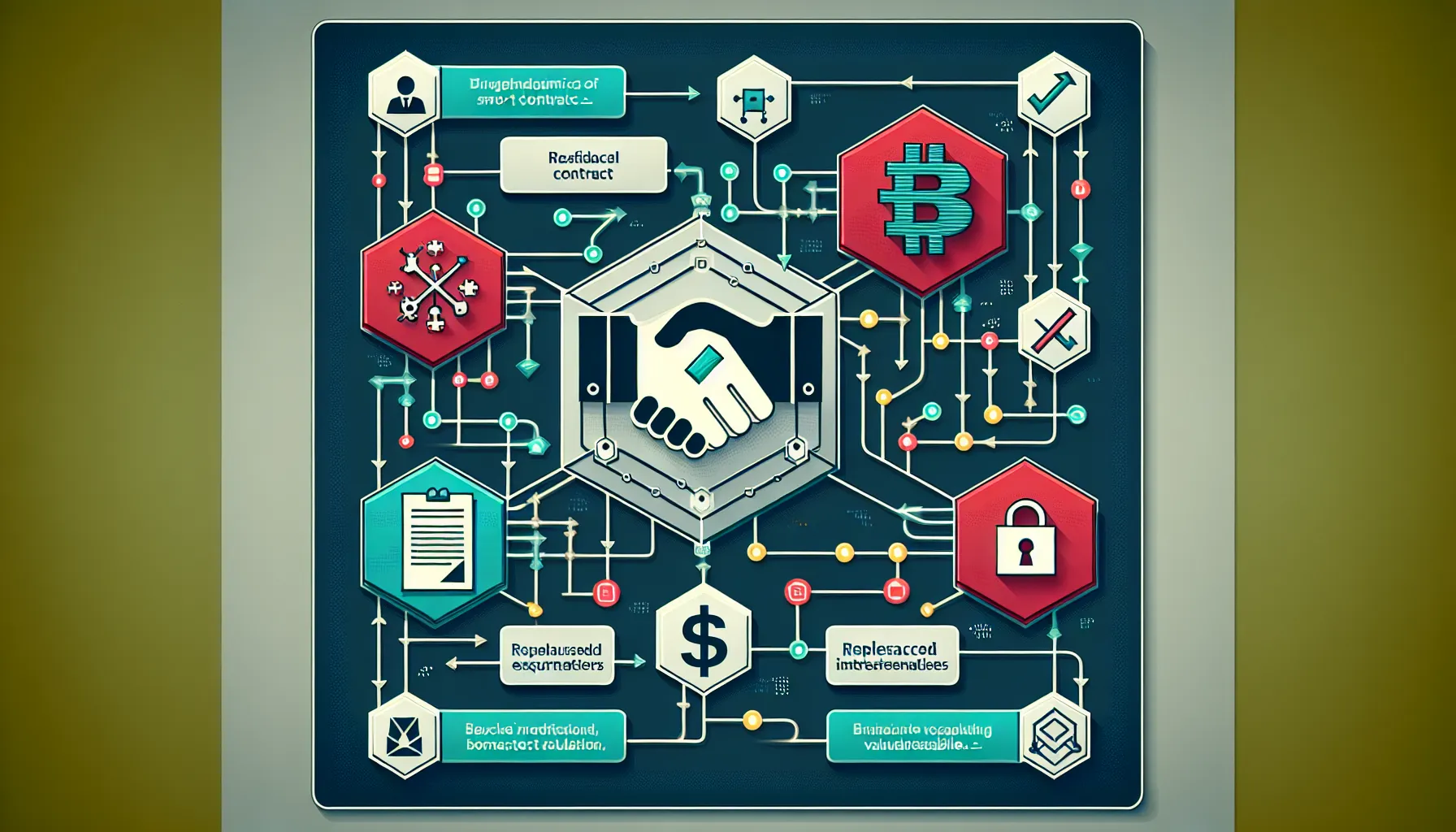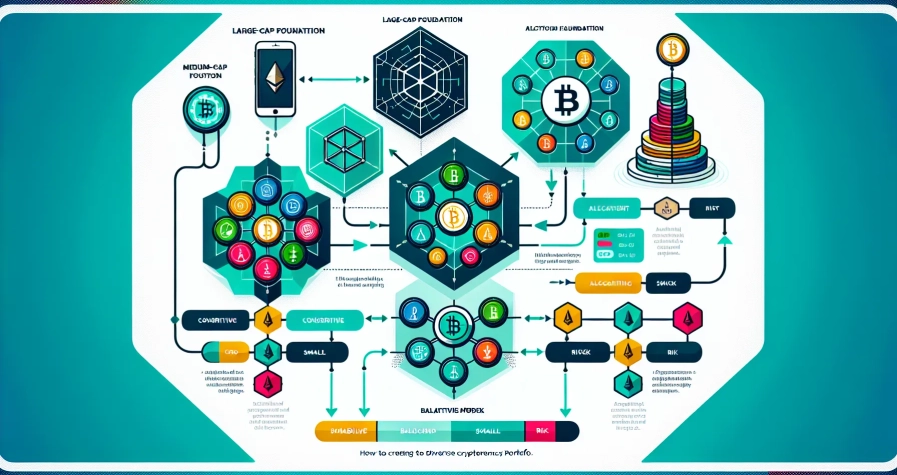Smart contracts have captured the imagination of investors worldwide, promising to revolutionise how transactions are executed without intermediaries. Yet beneath the surface of this innovation lies a complex web of technical and financial risks that can catch even experienced investors off guard. For newcomers to the space, understanding these risks isn’t optional, it’s essential.
The allure of automated, blockchain-based agreements is undeniable. But the very features that make smart contracts powerful, their permanence, their autonomy, their code-driven execution, also create unique vulnerabilities. From programming errors that drain millions in seconds to oracle manipulations that distort market realities, the landscape is riddled with pitfalls that demand attention and understanding.
This article explores the critical risks every new investor should grasp before committing capital to smart contract-based projects. Whether it’s technical vulnerabilities, financial uncertainties, or governance concerns, being informed is the first step toward protecting investments in this rapidly evolving ecosystem.
Key Takeaways
- Smart contract risks include irreversible code vulnerabilities, reentrancy attacks, and oracle manipulation that can drain investor funds within seconds.
- Understanding smart contract risks is essential for new investors, as the immutability of blockchain means programming errors cannot be corrected once contracts are deployed.
- Reentrancy attacks and flash loan exploits have caused hundreds of millions in losses, with the 2016 DAO hack demonstrating how vulnerabilities can threaten entire ecosystems.
- Investors should verify that smart contracts have been audited by reputable security firms and ensure the code is open source before committing capital.
- Diversification across multiple protocols and blockchain networks, combined with realistic return expectations, helps mitigate the unique risks associated with smart contract investments.
- Governance centralisation and third-party oracle dependencies introduce additional vulnerabilities that can compromise otherwise secure smart contract systems.
Understanding Smart Contracts and How They Work

At their core, smart contracts are self-executing programmes stored on a blockchain. Unlike traditional legal contracts that require human interpretation and enforcement, these digital agreements automatically execute predefined conditions when specific criteria are met. Think of them as vending machines: insert the correct payment, and the product dispenses automatically, no cashier required.
The blockchain environment gives smart contracts their distinctive characteristics. Once deployed, they operate autonomously across a distributed network of computers, with each transaction recorded immutably on the ledger. This decentralisation removes the need for trusted intermediaries, theoretically reducing costs and increasing transparency.
But, this autonomy comes with a significant caveat: permanence. Once a smart contract is deployed to the blockchain, it generally cannot be modified or updated. The code becomes law, and if that code contains errors or vulnerabilities, those flaws become permanent features of the contract. This immutability, whilst advantageous for trustless execution, transforms minor programming mistakes into potentially catastrophic risks.
For investors, understanding this fundamental nature is crucial. Smart contracts don’t just help transactions: they control access to funds, determine ownership rights, and execute complex financial operations without human oversight. When everything works as intended, the system is elegant and efficient. When it doesn’t, the consequences can be swift and irreversible.
The Core Security Vulnerabilities in Smart Contracts
Security vulnerabilities in smart contracts represent some of the most serious threats to investor capital. These aren’t theoretical concerns, they’ve resulted in hundreds of millions of pounds in losses over the years.
Code Exploits and Programming Errors
Even experienced developers can introduce bugs into smart contract code, and these bugs can be catastrophic. Common programming errors include integer overflow and underflow issues, where calculations exceed the maximum or minimum values a variable can hold, potentially allowing attackers to generate tokens from thin air or manipulate balances.
Access control flaws present another significant vulnerability. If a smart contract fails to properly verify who’s calling a particular function, unauthorised parties might gain administrative privileges or access restricted operations. Logic errors, where the contract’s behaviour doesn’t match its intended design, can similarly be exploited to misappropriate funds or manipulate contract outcomes.
Unchecked external calls are particularly dangerous. When a smart contract interacts with another contract without proper validation, it opens the door for malicious code execution. An attacker can craft a malicious contract that, when called, performs unexpected actions that drain funds or compromise security.
The challenge is that blockchain’s transparency works both ways. Whilst investors can review contract code, so can attackers. Once a vulnerability is discovered, it’s a race to exploit or patch it, and since contracts are immutable, patching often isn’t possible.
Reentrancy Attacks and Flash Loan Exploits
Reentrancy attacks represent one of the most notorious vulnerability classes in smart contract security. In these attacks, a malicious actor recursively calls a vulnerable contract function before the contract has finished updating its internal state. This allows the attacker to repeatedly withdraw funds or manipulate logic as if the previous calls hadn’t occurred.
The 2016 DAO hack remains the most famous example. Attackers exploited a reentrancy vulnerability to drain approximately £50 million worth of Ether, an event so significant it led to a controversial hard fork of the Ethereum blockchain itself. The incident demonstrated that smart contract vulnerabilities don’t just affect individual investors, they can threaten entire ecosystems.
Flash loan exploits add another dimension to the threat landscape. Flash loans allow users to borrow massive amounts of cryptocurrency without collateral, provided the loan is repaid within the same blockchain transaction. Whilst legitimate uses exist, attackers have weaponised flash loans to manipulate market prices, exploit arbitrage opportunities, and destabilise protocols. By borrowing enormous sums, manipulating prices or contract states, profiting from the manipulation, and repaying the loan, all within seconds, attackers can execute sophisticated attacks with minimal capital requirements.
These exploits highlight a fundamental tension in decentralised finance: the same composability and permissionless innovation that make the ecosystem powerful also create attack vectors that traditional finance never had to consider.
Financial Risks Every Investor Must Consider
Beyond technical vulnerabilities, smart contracts expose investors to distinct financial risks that differ markedly from traditional investment vehicles.
Immutability: When Mistakes Cannot Be Undone
The permanence of smart contracts is simultaneously their greatest strength and most terrifying weakness. In traditional finance, errors can often be corrected: transactions can be reversed, accounts can be frozen, and legal recourse exists. Smart contracts offer no such safety nets.
Once deployed, a flawed contract becomes a permanent fixture on the blockchain. If a critical vulnerability exists in a contract controlling millions of pounds, that vulnerability cannot simply be patched. In some cases, developers carry out upgrade mechanisms or emergency pause functions, but these introduce their own risks and complexities. More commonly, the only option is to abandon the compromised contract and migrate to a new one, a process that’s costly, disruptive, and doesn’t recover lost funds.
For investors, this means that due diligence isn’t just advisable, it’s existential. A single overlooked vulnerability in a contract’s code can result in complete and irreversible loss of invested capital. There’s no customer service helpline, no regulatory body to appeal to, and no legal mechanism for recovery. The code is the contract, and if the code is flawed, investors bear the consequences.
This immutability also means that smart contracts cannot adapt to changing circumstances. Market conditions shift, regulations evolve, and security best practices improve, but deployed contracts remain frozen in time, potentially becoming obsolete or non-compliant without any ability to update.
Liquidity and Market Manipulation Risks
Liquidity risk in smart contract investments manifests differently than in traditional markets. An investor might hold tokens that theoretically have value but find themselves unable to sell or exchange them due to flaws in the underlying smart contract, thin market depth, or manipulation.
Smart contract vulnerabilities can directly impact liquidity. If a token’s transfer function contains bugs or if liquidity pools become compromised, investors may find themselves locked into positions with no exit route. Unlike centralised exchanges where circuit breakers and trading halts provide some protection, decentralised protocols governed by smart contracts often lack such safeguards.
Market manipulation presents another serious concern. Flash loan attacks can artificially inflate or deflate prices, triggering liquidations and causing cascading losses. Front-running, where attackers observe pending transactions and insert their own transactions ahead of them, can erode investor returns and distort market efficiency. These attacks exploit the transparent nature of blockchain: pending transactions are visible in the mempool, giving sophisticated actors opportunities to profit at the expense of ordinary investors.
The concentration of holdings also affects liquidity. Many tokens have highly concentrated ownership, meaning large holders can dramatically impact prices with relatively modest trades. Combined with the automated nature of smart contract-based trading protocols, this can lead to volatile price swings that traditional market structures might dampen.
Third-Party Dependencies and Oracle Failures
Smart contracts rarely exist in isolation. Most depend on external data sources and interact with other contracts, creating dependency chains where a single point of failure can compromise the entire system.
Oracles serve as bridges between blockchains and the outside world, feeding smart contracts the real-world data they need to function. A decentralised finance lending protocol might need current price data to determine whether a loan is properly collateralised. A prediction market requires accurate information about real-world events. An insurance contract might need weather data to trigger payouts.
The problem is that oracles introduce centralisation and trust into otherwise trustless systems. If an oracle is compromised, manipulated, or simply malfunctions, the smart contracts relying on it will execute based on faulty data. An attacker who can manipulate oracle price feeds can trigger liquidations, drain liquidity pools, or cause smart contracts to execute under false premises.
Oracle manipulation has caused substantial losses in the decentralised finance space. Attackers have exploited low-liquidity oracle sources, manipulated price feeds through flash loans, and compromised centralised oracle providers. Even well-designed oracle networks can experience temporary failures or lag during periods of network congestion, potentially causing smart contracts to operate on stale or incorrect data.
Dependencies extend beyond oracles. Many smart contracts interact with other contracts, borrowing liquidity, routing transactions, or integrating functionality. This composability is powerful but creates cascading risk. If Contract A depends on Contract B, and Contract B depends on Contract C, a vulnerability in Contract C can compromise the entire chain. Investors might thoroughly research Contract A, unaware that their capital’s security actually depends on a complex web of external dependencies they’ve never examined.
The interconnected nature of decentralised finance means that smart contract risk isn’t isolated to individual protocols. Systemic risks emerge when multiple protocols depend on the same oracles, liquidity sources, or underlying infrastructure. A failure in one widely-used component can trigger a domino effect across the ecosystem.
Governance and Centralisation Concerns
Whilst smart contracts promise decentralisation, the reality is often more nuanced. Many projects retain significant centralised control, introducing risks that contradict the trustless ethos of blockchain technology.
Governance mechanisms determine how smart contracts are managed, upgraded, and controlled after deployment. Some contracts include administrator keys that grant privileged access to modify parameters, pause operations, or even upgrade contract logic. Whilst these features can provide valuable safety mechanisms, they also concentrate power in the hands of project teams or governance token holders.
For investors, this raises critical questions: Who controls the admin keys? How are governance decisions made? Can a small group of insiders change contract behaviour in ways that disadvantage ordinary token holders? The answers aren’t always transparent, and the technical complexity of governance mechanisms can obscure the true power dynamics.
Poorly decentralised governance creates several risks. Project teams with excessive control might act in their own interests rather than those of the broader community. Governance tokens supposedly democratise decision-making, but in practice, they’re often highly concentrated, meaning wealthy holders or early insiders maintain effective control. Proposals can be rushed through without adequate community review, or critical security concerns might be overlooked in favour of feature development.
Centralisation also creates regulatory risk. Authorities are more likely to pursue action against projects with identifiable leaders and centralised control structures. If a project’s smart contracts can be modified by a small group, regulators may argue that group bears responsibility for the system’s outcomes, potentially exposing the project to enforcement actions that could impact token value.
The opaqueness of governance arrangements compounds these concerns. Unlike traditional corporate governance, where structures are legally defined and publicly documented, smart contract governance often exists in a grey area between code, social consensus, and informal agreements. Investors may not fully understand who has authority to make critical decisions until a crisis forces those power dynamics into the open.
Multi-signature wallets and timelocks offer some protection, requiring multiple parties to approve changes and providing advance notice of pending modifications. But, these mechanisms are only as good as their implementation and the trustworthiness of the keyholders. Investors must evaluate not just the smart contract code itself, but the entire governance framework surrounding it.
How to Protect Yourself as a Smart Contract Investor
Understanding risks is only valuable if it informs protective action. Whilst no strategy can eliminate smart contract risk entirely, investors can take concrete steps to significantly reduce their exposure.
Due Diligence and Audit Verification
Thorough due diligence represents the first line of defence. Before investing in any smart contract-based project, investors should verify that the contract code has been audited by reputable security firms. These audits involve expert review of the code to identify vulnerabilities, logic errors, and potential exploits.
But, not all audits are created equal. Investors should look for audits from well-established firms with proven track records. The audit report should be publicly available and recent, an audit from two years ago provides little assurance if the contract has been modified since. Critically, an audit isn’t a guarantee of security. Auditors explicitly state that they cannot identify every possible vulnerability, and new attack vectors are constantly being discovered.
Beyond audits, investors should examine whether the project’s code is open source and verified on blockchain explorers. Closed-source or unverified contracts should be approached with extreme caution, there’s simply no way to confirm what the code actually does. Community review can also provide valuable signals: projects with active developer communities and transparent development practices generally pose lower risks than those operating in relative obscurity.
Investigating the project team’s track record matters as well. Have they successfully launched and maintained other projects? How have they responded to past security incidents? Are they responsive to community concerns? These qualitative factors, whilst harder to assess, often prove as important as technical audits.
Diversification and Risk Management Strategies
Concentration amplifies risk. Investors should spread exposure across multiple platforms, protocols, and token types to limit the potential damage from any single exploit. If one smart contract is compromised, a diversified portfolio ensures that only a portion of capital is at risk.
Diversification should extend beyond just holding multiple tokens. Consider spreading investments across different blockchain networks, as network-specific vulnerabilities can affect all contracts on that chain. Diversify across different types of smart contract applications, lending protocols, decentralised exchanges, yield farming platforms, since different application types face different risk profiles.
Position sizing is equally important. Investing amounts one can afford to lose entirely, whilst perhaps cliché advice, remains profoundly relevant in the smart contract space. The combination of technical complexity, novel risks, and irreversible transactions means that even diligent investors can experience complete losses.
Continuous monitoring should become routine practice. Subscribe to project announcements, follow security researchers on social media, and stay informed about emerging vulnerabilities. The smart contract landscape evolves rapidly: a protocol that’s secure today might face new threats tomorrow. Network upgrades, dependency changes, and newly discovered attack vectors can alter risk profiles quickly.
Risk management tools, where available, add additional protection. Multi-signature wallets require multiple approvals for transactions, reducing the risk of unauthorised access. Some platforms offer insurance products that provide coverage against smart contract failures, though these come with their own costs and limitations. Avoiding high-leverage products limits the potential for catastrophic liquidations during market manipulation or oracle failures.
Finally, maintain realistic expectations about returns. Extraordinary yields often reflect extraordinary risks. If a protocol offers returns that seem too good to be true, it probably involves risk factors that aren’t immediately apparent, whether technical vulnerabilities, unsustainable tokenomics, or exposure to complex dependency chains. Sustainable, moderate returns from well-established protocols generally represent better risk-adjusted opportunities than chasing outsized yields from unproven contracts.
Conclusion
Smart contracts represent a genuinely transformative technology, but transformation doesn’t mean the elimination of risk, it means the introduction of new and unfamiliar risks that demand understanding and respect.
For new investors, the path forward requires balancing enthusiasm for innovation with sober assessment of vulnerabilities. Technical risks from code exploits and reentrancy attacks, financial uncertainties from immutability and liquidity constraints, dependency vulnerabilities from oracles and external contracts, and governance concerns from centralised control, these aren’t abstract theoretical problems. They’re real threats that have cost investors substantial sums and will continue to do so.
Yet informed investors need not avoid smart contracts entirely. The key is approaching them with appropriate caution, conducting thorough due diligence, maintaining diversified positions, and staying continuously engaged with the evolving risk landscape. Smart contract technology will mature, security practices will improve, and the ecosystem will become more robust. But that maturation process isn’t complete, and investors who understand the current risks are far better positioned to navigate the space successfully.
The promise of decentralised, automated, trustless systems remains compelling. Realising that promise, but, requires investors who combine technical awareness with disciplined risk management. Understanding what can go wrong is the foundation for making smart contract investments that are genuinely smart.
Frequently Asked Questions
What are smart contract risks that new investors should be aware of?
New investors face several smart contract risks including programming errors and code exploits, reentrancy attacks, immutability issues where mistakes cannot be undone, oracle failures that feed incorrect data, and governance concerns where centralised control may conflict with decentralisation promises. Understanding these vulnerabilities is essential before committing capital.
How can immutability in smart contracts become a risk for investors?
Once deployed, smart contracts generally cannot be modified or updated. If the code contains vulnerabilities or errors, these flaws become permanent features. Unlike traditional finance where transactions can be reversed, smart contract mistakes are irreversible, potentially resulting in complete and permanent loss of invested capital without recourse.
What is a reentrancy attack in blockchain technology?
A reentrancy attack occurs when a malicious actor recursively calls a vulnerable contract function before it updates its internal state, allowing repeated fund withdrawals. The infamous 2016 DAO hack exploited this vulnerability, draining approximately £50 million worth of Ether and demonstrating the catastrophic potential of such exploits.
Why are oracle failures dangerous for smart contract investors?
Oracles feed real-world data to smart contracts, but if compromised or manipulated, contracts execute based on faulty information. Attackers can manipulate oracle price feeds to trigger liquidations or drain liquidity pools. Oracle failures introduce centralisation and trust vulnerabilities into otherwise trustless systems, creating systemic risks.
How should investors verify smart contract security before investing?
Investors should verify that contracts have been audited by reputable security firms with publicly available, recent reports. Check if code is open source and verified on blockchain explorers. Investigate the project team’s track record and community transparency. However, remember that audits cannot guarantee complete security or identify every vulnerability.
Can smart contracts be hacked even after professional audits?
Yes, audited smart contracts can still be exploited. Auditors explicitly state they cannot identify every possible vulnerability, and new attack vectors are constantly discovered. Flash loan exploits and oracle manipulations have compromised even audited protocols, which is why continuous monitoring and diversification remain crucial protective strategies.








